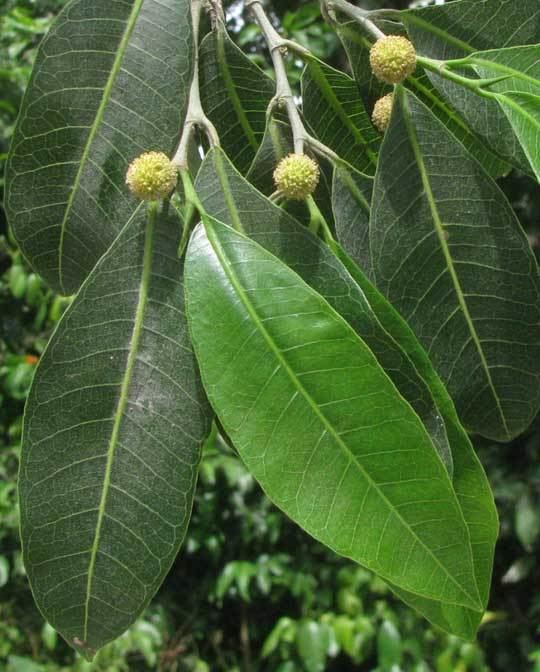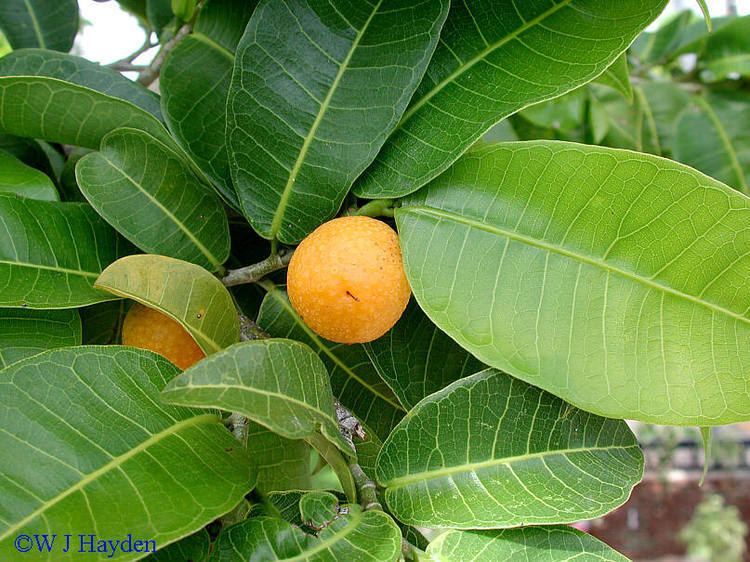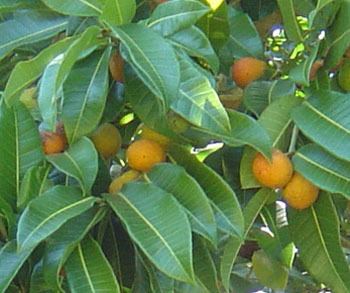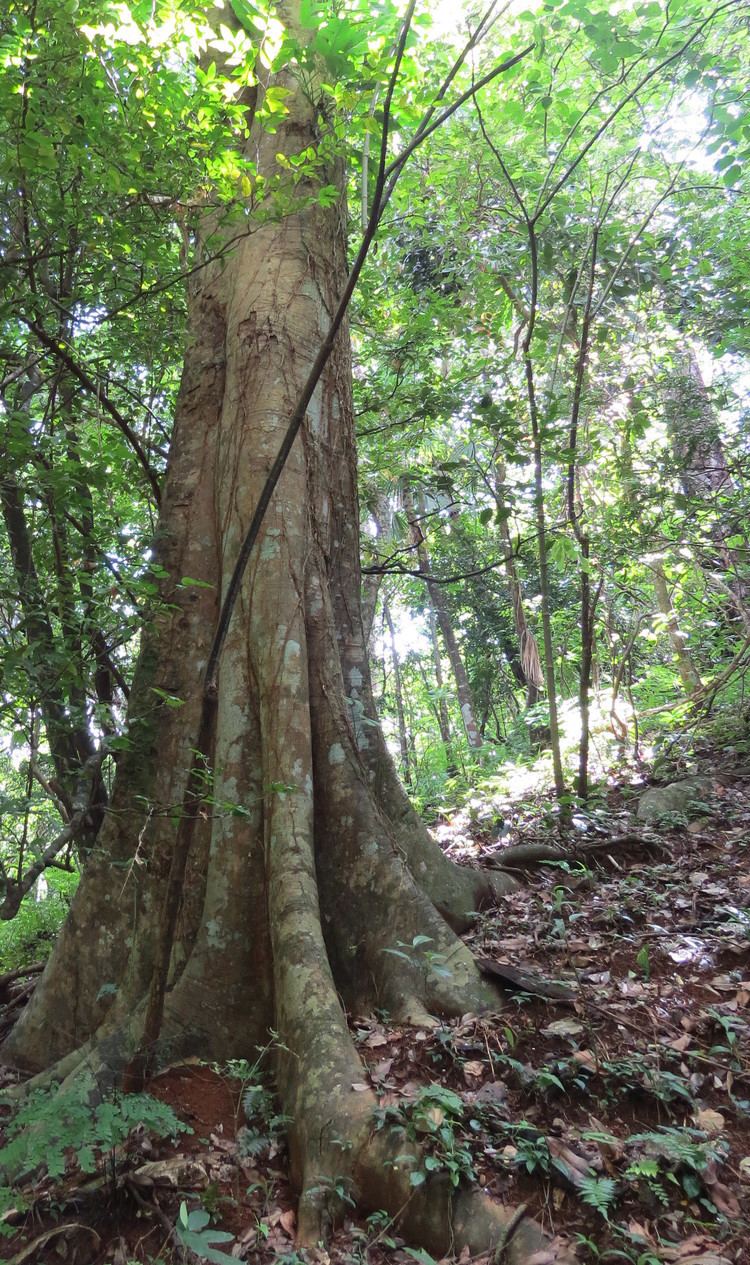Scientific name Brosimum alicastrum Protein 5.97 g (per 100 g) Magnesium 68 mg (per 100 g) | Tribe Dorstenieae Species B. alicastrum Energy 217 Calories (per 100 g) Potassium 1.183 g (per 100 g) Niacin 880 mcg (per 100 g) | |
 | ||
Similar Brosimum, Artocarpus camansi, Moraceae, Artocarpus, Breadfruit | ||
Maya nut brosimum alicastrum flowers
Brosimum alicastrum, the breadnut or Maya nut, is a tree species in the family Moraceae of flowering plants, whose other genera include figs and mulberries. The plant is known by a range of names in indigenous Mesoamerican and other languages, including: ramon, ojoche, ojite, ojushte, ujushte, ujuxte, capomo, mojo, ox, iximche, masica in Honduras, uje in Michoacan, and mojote in Jalisco, or also chokogou in Haitian Creole.
Contents
- Maya nut brosimum alicastrum flowers
- Maya nut brosimum alicastrum manchinga in tropical dry forest in peru
- Biology
- Distribution
- History and culture
- Nutritional and culinary value
- Associated reforestation and development programs
- References

Two subspecies are commonly recognized:
Maya nut brosimum alicastrum manchinga in tropical dry forest in peru
Biology
The tree can grow up to 45 m (130 ft) in height.
Distribution

This tree is found on the west coast of central Mexico and in southern Mexico (Yucatán, Campeche), Guatemala, El Salvador, the Caribbean, and the Amazon. Large stands occur in moist lowland tropical forests at 300–2000 m elevation (especially 125–800 m), in humid areas with rainfall of 600–2000 mm, and average temperatures of 24 °C (75 °F).
History and culture

The breadnut fruit disperses on the ground at different times throughout its range. It has a large seed covered by a thin, citrus-flavored, orange-colored skin favored by a number of forest creatures. More importantly, the large seed which is enveloped by the tasty skin is an edible ‘nut’ that can be boiled or dried and ground into a meal for porridge or flatbread. Breadnut is nutritious and has value as a food source, and may have formed a part of the diet of the pre-Columbian Maya of the lowlands region in Mesoamerica, although to what extent has been a matter of some debate among historians and archaeologists and no verified remains or illustrations of the fruit have been found at any Mayan archaeological sites.

It was planted by the Maya civilization two thousand years ago and it has been claimed in several publications by Dennis E. Puleston to have been a staple food in the Maya diet,. Puleston demonstrated a strong correlation between ancient Maya settlement patterns and the distribution of relic stands of ramon trees.

Other research has downplayed the ramon's significance. In the modern era, it has been marginalized as a source of nutrition and has often been characterized as a famine food.
The tree lends its name to the Maya archaeological sites of Iximché and Topoxte, both in Guatemala and Tamuin (reflecting the Maya origin of the Huastec peoples). It is one of the 20 dominant species of the Maya forest. Of the dominant species, it is the only one that is wind-pollinated. It is also found in traditional Maya forest gardens.
Nutritional and culinary value
The breadnut is high in fiber, calcium, potassium, folic acid, iron, zinc, protein and B vitamins. It has a low glycemic index (<50) and is very high in antioxidants. The fresh seeds can be cooked and eaten or can be set out to dry in the sun and eaten later. Stewed, the nut tastes like mashed potato; roasted, it tastes like chocolate or coffee. It can be prepared in numerous other dishes. In Petén, Guatemala, the breadnut is being cultivated for exportation and local consumption as powder, for hot beverages, and bread.
Associated reforestation and development programs
The Maya Nut Institute is the pioneer of the rediscovery of the tree's qualities to fight poverty and malnutrition. Since 2001, it has been developing community-based programs in Central and South America, setting up small cooperatives of production and transformation of maya nuts, and through "teaching rural communities about the value of Maya Nut for food, fodder, ecosystem services and income".
In collaboration with the Maya Nut Institute and local partners (Sadhana Forest, Article 29 organisation), the French NGO Biomimicry Europa has run a reforestation and permaculture program in Haiti since 2011 calledLife-Saving Trees.
It applies the research on trees conducted by Pr. Eric Verrecchia (University of Lausanne), member of the European program CO2SolStock that was developed and administered by the biomimicry consultant bureau Greenloop.
